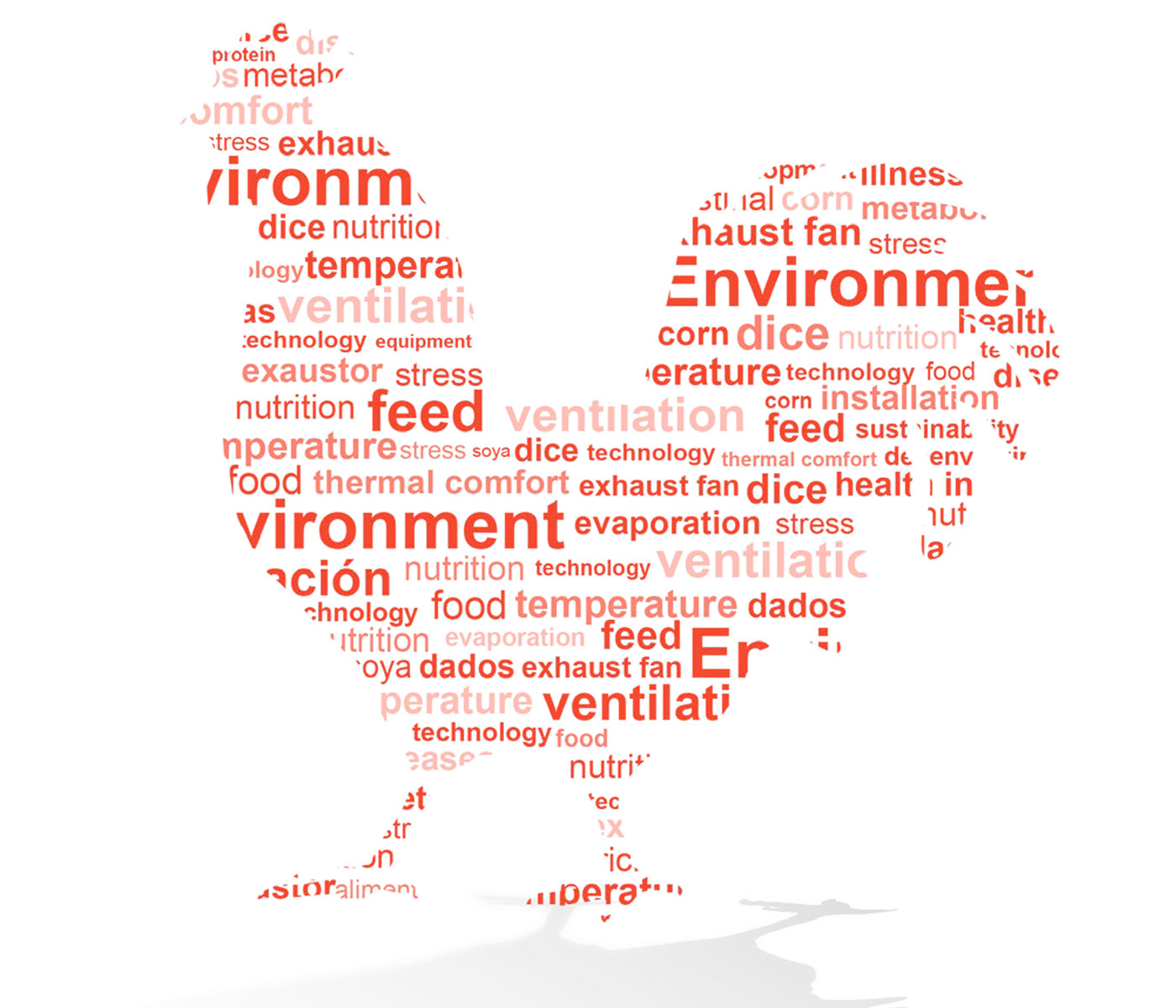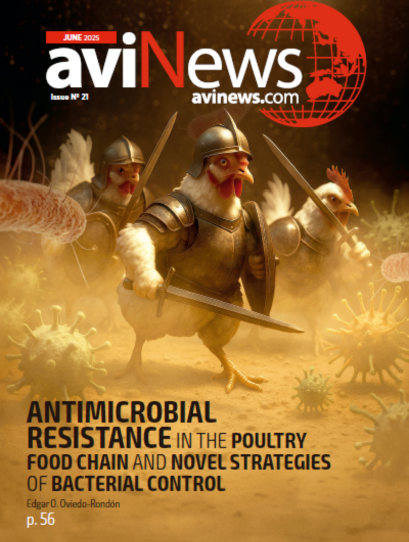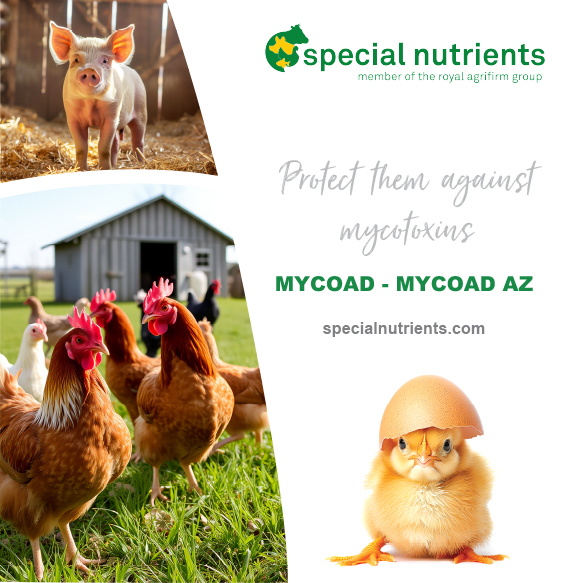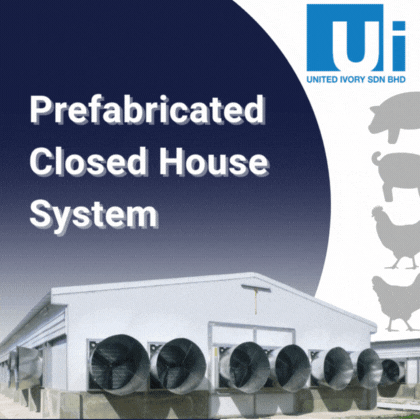Content available at: Indonesia (Indonesian) ไทย (Thai) Tiếng Việt (Vietnamese)
Among the pillars of the production chain in the poultry sector, the environment is an important factor that has advanced, due to better facilities, more efficient equipment, technologies that provide us with quick data and how to manage the different modes and thus favor the thermal comfort of the birds.
Birds are homeothermic animals and therefore depend on the temperature of the environment to maintain their body temperature at an average of 40.6°C.
- In the first days of life, the major heat exchange of the birds occurs through conduction, which is the heat exchange between the bird and the litter. For this heat exchange to be zero, the litter needs to be at an average temperature of 30-32°C. Hence the importance of preheating the shed. Considering also that in the initial phase of the birds the thermoregulatory system is not yet fully formed.
If these birds go through temperature challenges, there is a drop in performance in which their metabolism is altered.
When the temperature in the shed is lower than ideal for the birds, much of the nutrients in the feed that would be used for growth will be diverted to maintain their thermal regulation.
We have to take into account that on average, 80% of the nutrients ingested by chicks are destined for growth and the other 20% for basal metabolism.
- Chicks have a very high weight gain potential in the first days of life, reaching 4.6 times their initial weight in 7 days.
- Thus, any and all challenges faced by the birds will impair this weight gain ratio.
Considering the main types of heaters (oven and gas hood), before acquiring a heating system it is necessary to analyze all the variables and evaluate item by item, among which the main ones are:
- Heater efficiency;
- Equipment life;
- Depreciation;
- Maintenance;
- Labor hours to operate;
- Labor cost according to heater type;
- Energy cost;
- Worker safety;
- Equipment technical assistance;
- Availability of raw materials in the region;
- Average cost/batch of raw materials.
On the other hand, if these birds experience heat stress, they will consume more water and less feed due to an increase in body temperature, and consequently an increase in the rate of feed passage, reducing nutrient absorption.
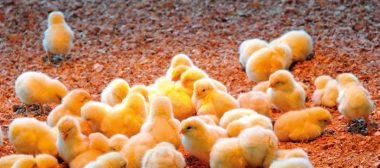
In addition, birds in high temperature conditions exchange heat by evaporation, a latent exchange that consumes a lot of body energy.
It is extremely important to control the environment in which the birds are kept, since the birds’ biological heat exchange mechanisms are not very efficient.
- Therefore, the more we control the temperature and all the factors that intervene in the environment inside the poultry house, the better the performance will be, since the bird in a thermal comfort zone is able to efficiently express its genetic potential, achieving good zootechnical and, consequently, economic results for the producer and the agribusiness.
In general, the sheds have made great progress in terms of:
- Ventilation;
- Efficiency of heaters,
- Sealing;
- Sizing.
On the other hand, few poultry farms have invested in thermal insulation. In terms of thermal insulation, the poultry house will have less interference from the external temperature to the internal part, in this way, the shed becomes a “thermal bottle”, if you place something cold or hot inside it, it will maintain the temperature at which it was initially placed for a longer period of time.
With this, the shed will maintain a better ideal temperature ratio for the birds, of course always observing their behavior, since this is the best “thermometer” to evaluate if the birds are in thermal comfort.
As for sealing and thermal insulation, besides being able to benefit from a better environment for the birds, it will help to reduce heating or cooling costs and increase the useful life of the equipment, i.e., any false air inlet and lower thermal insulation is an additional cost in production.
In fact, when we talk about environment, we need to analyze the whole, the structural part, the efficiency of the equipment, the maintenance, the raw material used as heating and, most importantly, how to operate all this equipment and programming to satisfy the thermal comfort of the birds.

It is important to reinforce this last item, having a good shed does not guarantee good zootechnical results, but it will bring less environmental challenges, since a well-managed shed allows to extract the best that it provides.
- Isothermal panels, available on the market, are very efficient and contribute to an optimal sealing and longer life of the shed compared to those with curtains on the sides.
- Another material available is glass wool or rock wool, which is placed on top of the shed lining, where it has great potential to help maintain the internal temperature, either when heating or cooling.
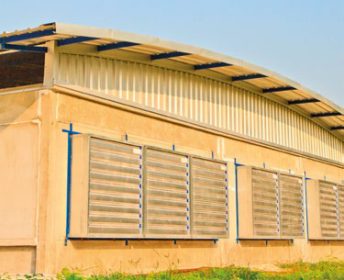
When it is in heating period, part of this heating rises and dissipates between the lining and the roof (attic), losing this heating.
- In addition, during hot periods of the year, an air cushion is formed in the attic, where this insulating material also reduces this temperature interference inside the shed, also considering that the attic is the hottest part of the shed.
Even with heating in mind, sheds with air inlets are very efficient, as long as they are used when necessary and correctly, which is no easy task.
- It is necessary to maintain good air dynamics and a correct distribution of ventilation, this will also help with the quality of the litter.
To achieve this, it is essential to have a good relationship between the number of inlets and the number of extractors, a static pressure according to the width of the shed and the correct opening of the inlets, otherwise this could have important negative effects on the performance of the flock.
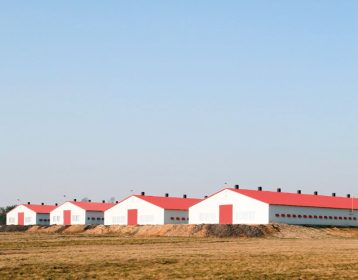
Considering all these points mentioned above, equally important is the quality of the litter, which is directly related to health, but is also one of the key points to maintain a good temperature inside the shed.
- The reason for the quality of the litter is that it is one of the factors that directly interferes with minimum ventilation.
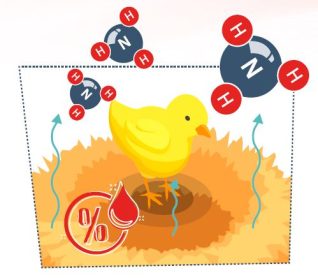
The higher the humidity in the litter, the higher the production of ammonia, which is a very harmful gas for the birds, and to remove this ammonia from the shed it is necessary to ventilate the house more. Consequently, this will make it even more difficult to heat the shed.
That is why it is important to treat the litter well in the interval, a dry and quality litter not only reduces the amount of pathogens, but also reduces the formation of ammonia.
This will also depend on the interval days that are critical for good litter management.
In light of the above, we know that severe winters and wet litters pose great challenges to maintaining temperature and air quality.
- Chicks do not tolerate high temperature ranges, for example, during the afternoon it reaches an average of 33°C and during the night it drops to 28°C, or depending on the situation, it reaches 24°C or less, which will result in important losses in performance and even high mortality.
However, in extreme cases of very low outside temperature and high ammonia level inside the shed, between choosing heating and complying with air quality, prioritize good air quality.
- It is less serious to have good air quality with a slightly below ideal temperature than to dampen and have high ammonia production inside the shed to try to achieve a better temperature.
- Ammonia causes a lot of damage to performance and health.
Depending on the amount and length of time this bird is exposed to ammonia, it can cause blindness, but before that, ammonia causes major problems such as:
- Immunosuppression;
- Reduced water and feed consumption;
- Causes respiratory problems;
- Overloads the body’s energy;
- Decreases weight gain and,
- Poorer feed conversion.
Another point of attention is the increasing challenges posed by aerosaculitis; the greater the exposure of these birds to poor conditions, the more this challenge will worsen.
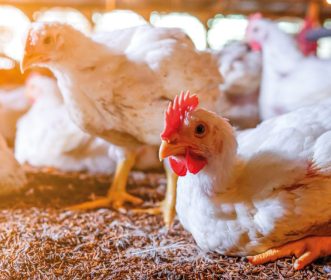
New technologies and structures are emerging every day that allow greater control of the environment in broiler production.
However, the best structures and technologies do not guarantee good zootechnical results, it is necessary:
- Good management;
- Interpretation of data and facts;
- Commitment and knowledge driving these new ways and technologies.
To extract the best they provide, thus maximizing production in a sustainable way and reducing production costs.
PDF
